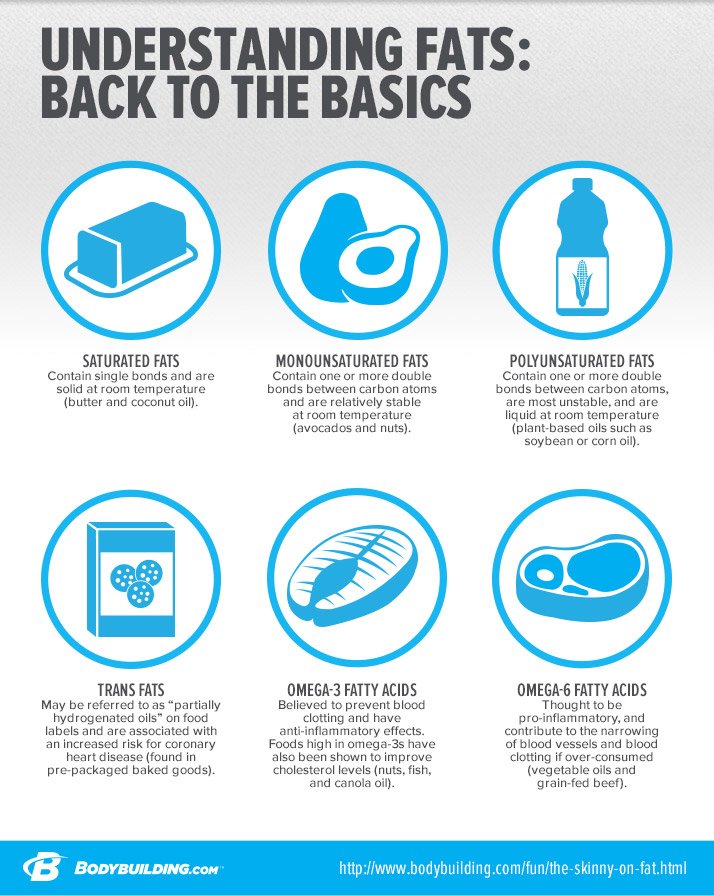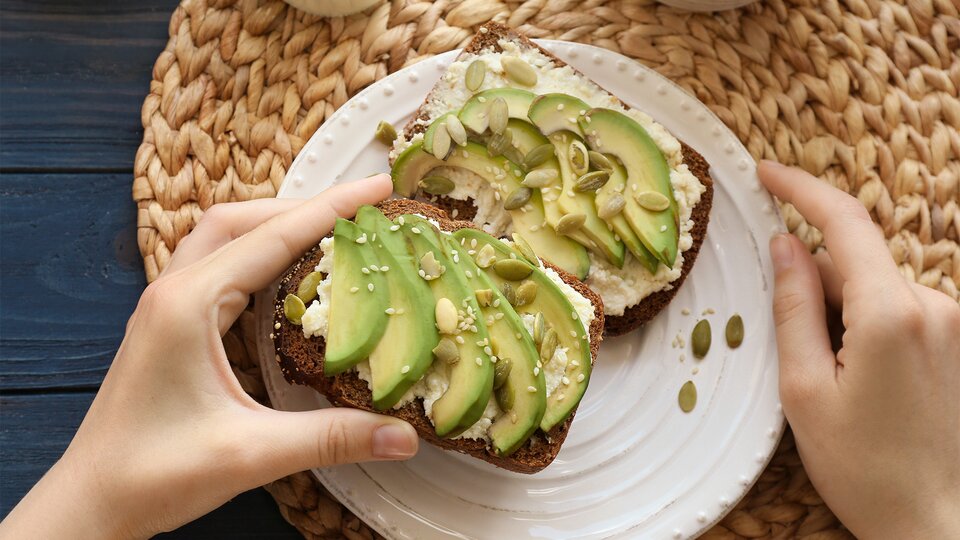Products You May Like
CALORIES | MACRONUTRIENTS | PROTEIN | CARBS | FAT
Fat is an essential macronutrient for optimal health and well-being. It’s what every cell membrane in our body is made of and helps to regulate many hormonal and anatomical processes. But it’s also a calorie-dense source of fuel, and knowing how to factor fatty foods into your diet is essential for achieving your goals of muscle gain or weight loss.
Use this calculator to help you determine your ideal fat intake based on your sex, height, weight, activity level, and fitness goal!
FAT INTAKE CALCULATOR
Sex
Height
Weight
Goal
Activity Level
Alongside an appropriate number of calories and protein, this daily fat target can help you lose weight while staying healthy and feeling great. Here are the next steps on your weight-loss journey:
1. Pick a weight-loss workout plan.
A well-designed program is an essential part of turning hard numbers into hard-body results! Here are the most popular weight-loss plans from BodyFit:
2. Calculate your macros.
Fats are just one of the three macronutrients. To get targets for the other two, as well as a daily calorie target, use the Bodybuilding.com Macronutrient Calculator.
3. Learn about the best fat-loss supplements.
Supplements can help you accelerate your results once you have your macronutrients and training in place. Krissy Kendall, Ph.D., shares her recommendations in the article, “5 Ways to Up Your Fat-Loss Supplement Game.”
4. Join a fitness community.
For over 10 years, members of BodySpace have been helping each other build their best bodies. Join a fitness community that’s over 2 million people strong!
Alongside adequate calories and protein, this daily fats target can help you build lean muscle mass and support your hard training. Here are the next steps on your journey to see the scale go up:
1. Pick a muscle-building workout plan.
A well-designed program is an essential part of turning hard numbers into hard-body results! Here are the most popular ones from BodyFit:
2. Calculate your macros.
Fats are just one of the three macronutrients. To get targets for the other two, as well as a daily calorie target, use the Bodybuilding.com Macronutrient Calculator.
3. Learn about the best supplements for gaining muscle.
Supplements can help you accelerate your muscle-building results once you have your macronutrients and training dialed in. Krissy Kendall, Ph.D., shares her recommendations in the article, “8 Proven Supplements for Muscle Growth and Strength.”
4. Join a fitness community.
For over 10 years, members of BodySpace have been helping each other build their best bodies. Join a fitness community that’s over 2 million people strong!
A well-designed program is an essential part of staying motivated and seeing results. Here are some of our most popular programs from BodyFit:
1. Pick a workout plan.
A well-designed program is an essential part of staying motivated and seeing results. Here are some of our most popular programs from BodyFit:
2. Calculate your macros.
Fats are just one of the three macronutrients. To get targets for the other two, as well as a daily calorie target, use the Bodybuilding.com Macronutrient Calculator.
3. Learn about the best health-focused supplements.
Supplements can help you accelerate your results and support your training once you have your protein target and training in place. Chris Lockwood, Ph.D., shares what to take and why in the article, “Start Here: The Most Important Supplements for Every Body.”
4. Join a fitness community.
For over 10 years, members of BodySpace have been helping each other build their best bodies. Join a fitness community that’s over 2 million people strong!
WHICH GOAL AND ACTIVITY LEVEL SHOULD I CHOOSE?
MAINTAIN CURRENT WEIGHT
First time tracking macros? Or not sure which goal is right for you? Then start with “maintenance.” In theory, this is where you will eat the same number of calories that you burn and maintain your current weight. Many nutritionists say before you start cutting or adding calories or tweaking your macros, you should spend some time at maintenance level and get more comfortable with tracking your foods and portion sizes.
LOSE WEIGHT
If you know that you’re ready to lose a few pounds and you have some experience counting calories or tracking macros, select “lose weight.” This will give you a target that is usually 200-700 calories below maintenance, depending on your activity level, and a 40/40/20 macronutrient breakdown of carbs, protein, and fats. This is a popular “sweet spot,” both calorically and in terms of macronutrients, for healthy, sustainable weight loss.
GAIN WEIGHT
Gaining weight—especially as muscle—sounds easy enough. Train hard, eat big, right? But once the fork hits the plate, plenty of people find they need to eat far more than they realized to see the scale move up. Selecting “gain weight” will put you 500 calories above maintenance, on a 40/30/30 macro split. If this doesn’t make the scale go up after a couple of weeks, you may need to add a few hundred more calories. If eating more protein becomes too expensive or filling, you may be better off getting those calories from fats or carbs.
ACTIVITY LEVEL
This choice should reflect the amount of activity in your life based on how you exercise and how physically active your life and/or job is. Nutritional researchers agree calorie estimates should take more into account than just the amount you exercise. Here’s how to figure out what’s right for you:
- Sedentary: You work at a desk job and you don’t do much housework, walking, or exercising.
- Lightly active: You don’t exercise much, but you go for walks 1-3 times per week and are on your feet doing housework during some of the day.
- Moderately active: You exercise 3-5 times a week and stay moving throughout the day with non-exercise activities.
- Very active: You exercise intensely or play vigorous sports on most days.
- Extra active: You exercise intensely or play vigorous sports nearly every day, including occasional “two a days.” You also work a physical job or are on your feet most of the time.
HOW MUCH FAT IS IN MY FOOD?
You can calculate this using food labels, as well as by weighing out your food on a food scale and using one of the many online nutritional databases.
Weighing food may seem like a lot of counting and not much fun, but it gets easier over time. Fitness coach Vince Del Monte says in the article, “From Here to Macros: 4 Steps to Better Nutrition” that you quickly learn to “eyeball” quantities of both calories and macronutrients after just a few weeks of practice.
Bodybuilding.com has also created visual guides to help you learn these skills.
WILL EATING FAT MAKE ME FAT?
No! The fats you eat do not automatically become fat deposits on your body, also known as adipose tissue. In fact, as Ciaran Fairman explains in his article, “Everything You Know About Fat is Wrong,” the low-fat trend of the late 20th century did very little to curb the obesity epidemic and the rise in heart disease and diabetes among Americans.
The truth is, not only do you need to eat fat as part of a healthy diet to manufacture critical hormones and cell membranes, daily fat intake is also crucial for your body to be able to absorb key nutrients,/a>, such as fat-soluble vitamins like E and K.
Registered dietician Douglas Kalman, Ph.D., explains why you need dietary fats and how to navigate the “good fat/bad fat” narrative in the video, “Fats: Seeing Through the Mixed Messages” from the BodyFit course Foundations of Fitness Nutrition.
WHAT TYPES OF FATS SHOULD I EAT?
Fat isn’t just fat. What type you eat matters!
Unsaturated fats include both the monounsaturated fats found in high-fat foods like avocados and nuts, and the polyunsaturated fats found in soybean and corn oil. Saturated fats tend to be solid at room temperature and include things like butter and coconut oil. Since both unsaturated fats and saturated fats can be found in natural plant sources, you’re likely to have some of both in your diet. And as Fairman explains, all three varieties are essential for different reasons.

Fairman recommends dedicating around 10 percent of your daily intake to saturated fats, and the rest from unsaturated fats or omega-3 fatty acids.
Support both better cardiovascular health and your personal fitness goals with an omega-3 supplement. – View All
GET SYSTEMATIC ABOUT YOUR RESULTS
Once you have your daily fat intake, it’s time to take the same kind of strategic approach to the rest of your training and nutrition. These popular calculators can help you dial in your plan!
